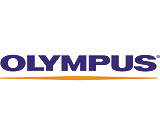|
A
MOTLEY COLLECTION OF BUSINESS AND ECONOMIC NEWS |
|

|
|
FOREIGN DIRECT INVESTMENTS
|
 India’s FDI into London second biggest India’s FDI into London second biggest
India has become the second-biggest source of new foreign investment into London, behind only the United States, a report released last month said.
According to the Financial Times, a new report from Think London, the capital’s foreign direct investment (FDI) agency, says that India has accounted for 16 per cent of all new foreign investment into London between 2003 and 2007.
That has helped investment into London jump to £52 billion, from £38 billion two years ago. The United States topped the list, with 31 per cent of new investment, while France was third with 7 per cent. China, Japan and Canada with 6 per cent each followed.
“London does not have the same resonance in China, Russia or Brazil as it does in India,” Think London’s chief executive Michael Charlton noted. The United States still dominates total foreign investment into the capital, though, accounting for about half of it, followed by France with 12 per cent.
Charlton warned against complacency, however, noting that “FDI companies are continually re-evaluating their presence here. More than half review their global strategy every three to five years, and 13 per cent do so every year.”
|
|
|
| STAINLESS STEEL |
 Acerinox, Nisshin Steel plan India JV Acerinox, Nisshin Steel plan India JV
Acerinox SA, the world’s second-biggest stainless steelmaker, is studying building a plant in India with Japan’s Nisshin Steel Co to tap rising demand from makers of automobiles and houses.
The company was considering stainless steel demand and energy issues as part of the study into establishing a joint venture in India, said Acerinox Chairman and Chief Executive Victoriano Munoz Cava.
Ace rinox is looking into India, the world’s fastest-growing major economy after China, because overall steel demand is forecast by the government to double by 2012. Nisshin Steel, which offered technology to Acerinox when the European company was founded in 1970, holds an 11 per cent stake in the Madrid-based company, as per Bloomberg data. rinox is looking into India, the world’s fastest-growing major economy after China, because overall steel demand is forecast by the government to double by 2012. Nisshin Steel, which offered technology to Acerinox when the European company was founded in 1970, holds an 11 per cent stake in the Madrid-based company, as per Bloomberg data.
“We have not decided the location because not only consumption, but securing power supply matters,’’ Munoz Cava said.
Global output of stainless steel rose 17 per cent last year to 28.4 million tonnes, with China’s production gaining 68 per cent to 5.3 million tonnes, according to data from the International Stainless Steel Forum.
Acerinox was the world’s second-biggest producer of sheet stainless steel by 2006 output, according to Nippon Steel & Sumikin Stainless Steel Corp estimates. The company’s profit surged to ¤210.2 million ($284 million) in the first quarter this year from 23.16 million euros a year ago, as higher output offset lower margins caused by increasing competition from China, Munoz Cava said.
“Competition will be intensified in the coming years,’’ he said on the sidelines of a stainless steel forum meeting.
China, which became the world’s biggest stainless steelmaker last year, will boost output by another 37 per cent to 7.35 million tonnes this year, said metal research company Heinz H Pariser.
Industry consolidation was likely in Asian countries including Japan, South Korea and China, Munoz Cava said. Acerinox may seek to buy steel plants in China, if they are cheap, rather than building a more costly new mill, he said.
|
|
|
| TELECOM |
 Broadband to go free in 2 years Broadband to go free in 2 years
The government proposes to offer all citizens of India free, high-speed broadband connectivity by 2009, through the state-owned telecom service providers BSNL and MTNL. While consumers would cheer, the move holds the potential to kill the telecom business.
Many cities in the US have drenched themselves in wireless broadband connectivity which is freely accessible to residents. The idea is to boost economic activity in general. The government of India plans to achieve free broadband connectivity at a speed of 2 MB per second across the country, with a similar goal. Senior government officials expect to be able to achieve this goal spending only a portion of the corpus of the Universal Service Obligation Fund (USOF).
All telecom operators contribute 5 per cent of their revenues every year to USOF. It is estimated that the unutilised sum from the USOF has touched Rs 9,194.12 crore by March 2007-end.
The current technological trend is for voice calls also to shift to the Internet, using voice over internet protocol (VOIP). The quality of VOIP calls, patchy to start off with, has been improving steadily over the years and by 2009, is likely to be as good as current analogue calls that establish a circuit between the calling and called parties. When that happens, revenue streams from calls would dry up and telecom companies would need to develop value-added applications to make money from the connectivity they provide for free or virtually free.
The department of telecom (DoT) will be taking a series of steps to make its plans for free broadband a reality. These include, using the USOF to set an extensive optic cable network across the country, opening up the long-distance sectors to further competition, allowing free and fair access to cable landing stations, permitting the resale of bandwidth, setting up web hosting facilities within the country and asking all internet service providers to connect to the National Internet Exchange of India
(NIXI).
|
|
|
 Virgin Mobile to partner Tata Virgin Mobile to partner Tata
Richard Branson’s Virgin Mobile is entering the Indian market through a 50:50 joint venture with the Tatas. The Tata Group’s telecom arm, Tata TeleServices, will form the JV to introduce the Virgin brand in the world’s fastest growing telecom market.
Virgin will exclusively license the Virgin Mobile brand and technology expertise in the area of value-added services (VAS) and handsets to TTSL. This will allow CDMA operator TTSL to use Virgin’s core expertise in marketing and service innovation to create offerings which will be largely targeted at the youth segment, sources told ET.
The two parties are learnt to have started recruitment for the joint venture, expected to be functional this quarter. The UK-based global executive search firm CHR Global is recruiting staff for the new entity, sources added. The search for a CEO for the joint venture is on.
The Tata Indicomm brand will be positioned as the mass market brand while Virgin will be a more youthful brand as it is seen globally. The move is likely to help TTSL expand market share from the current 7.1% as Virgin, one of the most respected service brands in the world, has a global connect with the youth segment. Youth comprise nearly 50 per cent of Indian cellular users.
A TTSL spokesperson refused to comment. Virgin Mobile is present in six countries - the US, the UK, France, South Africa, Australia and Canada. Each of its businesses acts as an independent entity, usually in partnership with another local company which provides the network infrastructure. The company is the world’s first mobile virtual network operator (MVNO).
|
|
|
|
DIGITAL TECHNOLOGY
|
 Olympus eyes $20 million topline from India Olympus eyes $20 million topline from India
Digital imaging company Olympus said it plans to invest Rs 50 crore in India to set up six exclusive showrooms in major metropolitan cities, as it targets to double revenues from the country to $20 million this fiscal.
“We closed the last fiscal in India with a top-line of 10 million dollars and with the double digit growth in the market coupled with new launches, we anticipate our revenues to double to 20 million dollars in the current fiscal,” Olympus General Manager (Asia-Middle said East Business group) Yoshitomo Nagashima.
He said Olympus would sell its entire portfolio of products, including digital cameras, voice recorders and binoculars in India through its exclusive showrooms.
“The company would invest Rs 50 crore in opening six showrooms in the country. These showrooms would be owned by the company but would be managed by its authorized distributors,” he said.
Olympus exclusive showrooms would come up in cities including Delhi, Mumbai, Kolkata, Chennai, Bangalore and Hyderabad. The company has launched its range of water-proof, shock-proof digital cameras priced between Rs 15,995 to Rs 41,995.
Olympus’ products are present in over 2,000 multi-brand outlets which the company plans to increase to 3,500 in the next six months.
The company operates in India through a subsidiary—Olympus India Pvt India—and has tied up with three distributors to market the products.
|
|
|
|
more...
|
|
|
|
|
June 2007
|
|

|
|
|
|